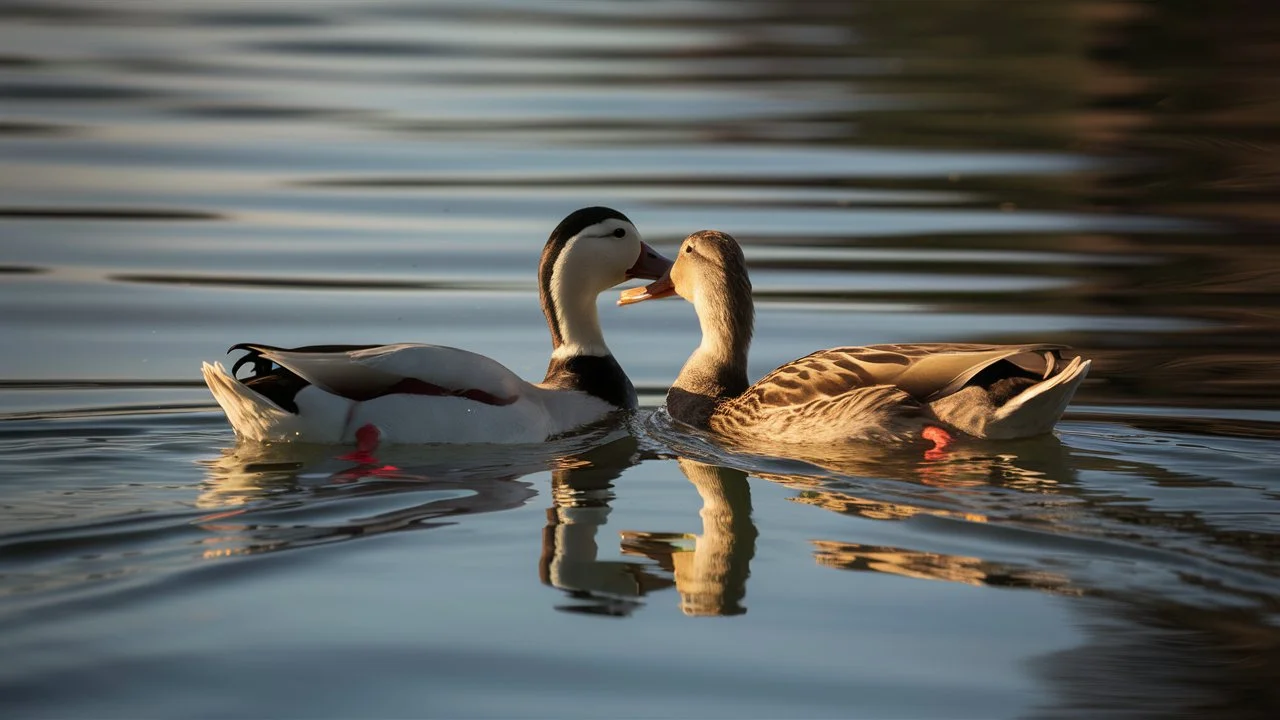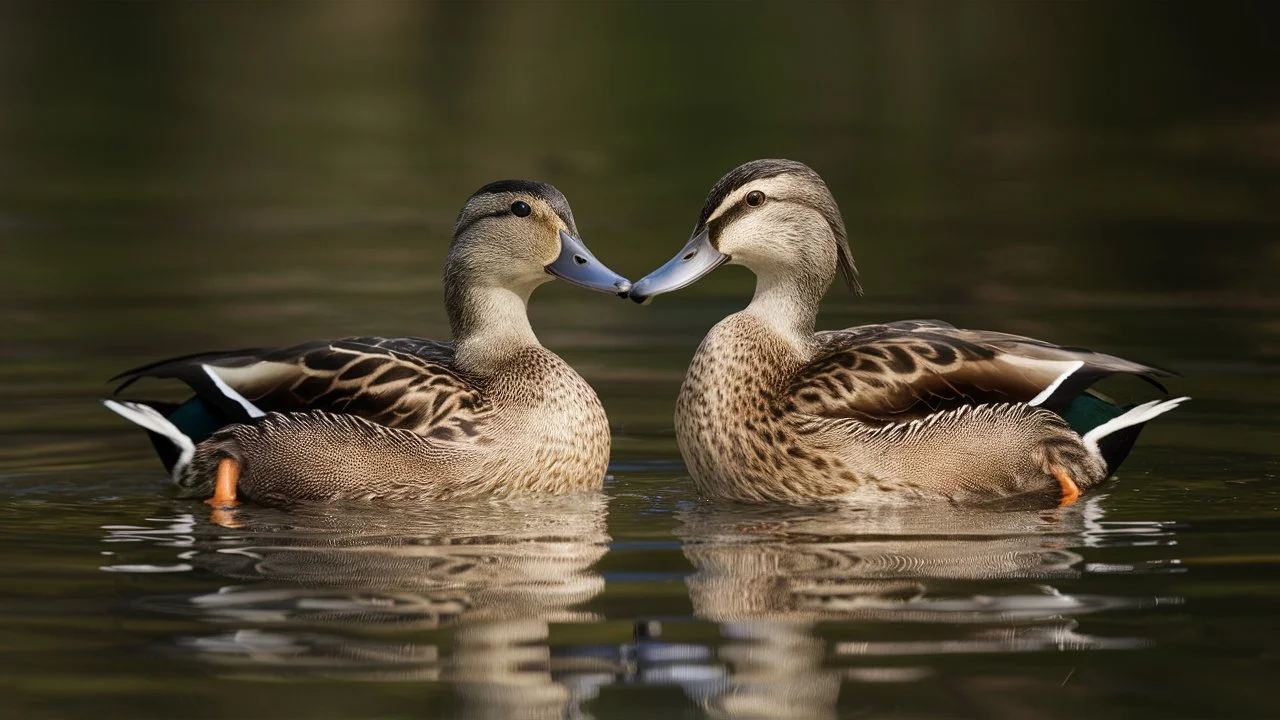Ducks are fascinating birds, and one interesting thing about them is their relationships. Some people wonder if ducks stay with the same partner for life. This is a question about whether ducks mate for life. In simple terms, it means whether they choose one partner and stay with them forever. Let’s explore this topic to understand more about the mating habits of ducks.
No, ducks do not mate for life. While some ducks form strong pair bonds during the breeding season, they usually find new partners each year. Ducks do not stay with the same mate for life.
Do Ducks Mate for Life?
Ducks are fascinating birds and many people are curious about their mating habits. A common question is whether ducks stay with the same partner for life. Let’s dive into the details to understand how ducks form relationships and raise their young.
Do Ducks Stay with One Partner?
No, ducks do not mate for life. Unlike some bird species that form lifelong pair bonds, most duck species do not stay with the same partner forever. Ducks typically form strong pair bonds during the breeding season, but these bonds usually last only for that season. Once the season is over, they often find new partners the next year.
How Long Do Ducks Stay Together?
Ducks often stay together just for the breeding season. During this time, the male duck (drake) and female duck (hen) work together to build a nest, lay eggs, and care for their ducklings. This partnership is crucial for the survival of their young. However, after the ducklings are independent, the bond between the male and female usually dissolves.

Why Do Ducks Change Partners?
Ducks change partners for several reasons:
- Genetic Diversity: By choosing different mates each season, ducks increase the genetic diversity of their offspring. This diversity helps ensure that the ducklings are healthy and have a better chance of survival.
- Mate Selection: Each breeding season, ducks have the opportunity to choose the best possible mate available. This selection process can lead to stronger, more successful offspring.
- Survival Strategy: Changing partners allows ducks to adapt to different environments and situations. If a previous mate did not help produce successful offspring, a duck can choose a new mate that might be more suitable.
Do Any Ducks Mate for Life?
While most ducks do not mate for life, there are a few exceptions. Some species, like the Black-bellied Whistling Duck and the Wood Duck, are known to form long-term pair bonds. These species are more likely to stay with the same partner for multiple breeding seasons, but even they may change partners if necessary.
Related reading: Will Ducks Kill Chickens?
How Fast Do Ducks Mate for Life?
Ducks are fascinating creatures, and their mating habits can vary widely. While most ducks do not mate for life, there are some exceptions. Understanding how quickly ducks form and maintain their pair bonds can give us insight into their behavior.
Pair Bond Formation
For most duck species, pair bond formation happens quickly during the breeding season. Here’s a closer look at how this process unfolds:
- Courtship Displays: During the breeding season, male ducks (drakes) perform elaborate courtship displays to attract female ducks (hens). These displays can include specific calls, movements, and even physical displays of their plumage.
- Choosing a Mate: Female ducks evaluate these displays and choose a mate based on the drake’s performance and other factors such as his health and vitality. This selection process can happen rapidly, sometimes within a few days.
- Forming the Bond: Once a pair bond is formed, the male and female duck stay close to each other, engaging in mutual preening and other bonding behaviors. This bond lasts for the duration of the breeding season, which can range from a few weeks to a few months.
Long-Term Pair Bonds
While most ducks do not mate for life, some species are known to form long-term pair bonds. For these species, the process is slightly different:
- Initial Pairing: Ducks that are likely to form long-term bonds typically pair up for the first time during their initial breeding season. This bond formation follows the same general process as other ducks but is characterized by a stronger and more persistent attachment.
- Staying Together: Once the initial bond is formed, these pairs often reunite in subsequent breeding seasons. This can happen quite quickly, as the ducks remember their previous partners and seek them out.
- Mate Fidelity: Species like the Black-bellied Whistling Duck and the Wood Duck may remain with the same partner for several breeding seasons. If both ducks survive and return to the same breeding grounds, they can quickly re-establish their bond, often within a few days of reuniting.
How Long Do Ducks Mate for Life?
Ducks have diverse mating habits, and while most do not mate for life, there are exceptions. Understanding the duration of pair bonds in ducks can provide insights into their social behavior and breeding strategies.
Typical Duck Mating Patterns
For most duck species, pair bonds are seasonal:
- Seasonal Bonds: Ducks usually form pair bonds at the beginning of the breeding season. These bonds last for the duration of that season, which can be several weeks to a few months.
- Annual Changes: After the breeding season ends and the ducklings are independent, the pair bond dissolves. The ducks will often find new partners in the next breeding season.
Long-Term Pair Bonds
Some duck species do exhibit long-term pair bonds, which can last multiple breeding seasons:
- Black-bellied Whistling Ducks: These ducks are known to form long-term pair bonds, often staying with the same partner for several years.
- Wood Ducks: Wood ducks may also form strong pair bonds that can last across multiple breeding seasons.
Duration of Long-Term Bonds
For species that mate for life or have long-term pair bonds:
- First Breeding Season: The initial bond is formed during the first breeding season. This bond is strong and often involves mutual preening, nest building, and raising ducklings together.
- Subsequent Seasons: In the following years, these ducks will typically reunite with the same partner. If both partners survive and return to the same breeding grounds, they can quickly re-establish their bond.
- Years Together: The duration can vary, but some pairs stay together for many years, effectively mating for life.
Factors Affecting Long-Term Bonds
- Survival Rates: The longevity of the pair bond depends on the survival of both partners. If one duck dies, the other will find a new mate.
- Breeding Success: The bond’s strength can be influenced by the success of their breeding efforts. Successful pairs are more likely to stay together.

When Do Ducks Mate and Lay Eggs?
Ducks have specific breeding seasons during which they mate and lay eggs. Understanding the timing of these activities can help us appreciate the life cycle of these fascinating birds.
Mating Season
- Spring Mating: For most duck species, the mating season occurs in the spring. This is when male ducks (drakes) and female ducks (hens) engage in courtship displays and form pair bonds. The exact timing can vary depending on the species and the region.
- Courtship Displays: During the mating season, drakes perform various displays to attract hens. These can include vocal calls, physical displays of their feathers, and specific movements.
- Pair Bond Formation: Once a hen selects a mate, the pair forms a bond that will last through the breeding season. They stay close to each other, preparing for nesting and egg-laying.
Nesting and Egg-Laying
- Nesting Sites: After mating, hens search for suitable nesting sites. These sites are often well-hidden and protected from predators. Ducks can nest in a variety of places, including tall grass, reeds, and even tree cavities, depending on the species.
- Egg-Laying Period: Hens typically start laying eggs shortly after selecting a nesting site. This process usually begins in late spring or early summer, but the exact timing can vary.
- Number of Eggs: The number of eggs laid by a duck can vary widely. On average, a hen can lay anywhere from 5 to 15 eggs per clutch. Some species may lay more or fewer eggs depending on environmental conditions and their specific breeding strategies.
- Incubation: Once all the eggs are laid, the hen begins incubation. She sits on the eggs to keep them warm and ensure proper development. The incubation period generally lasts about 25 to 30 days, depending on the species.
Factors Influencing Timing
- Species: Different duck species have different breeding seasons and timelines for mating and egg-laying. For example, Mallards usually start mating in late winter to early spring, while other species may start later.
- Geographical Location: Ducks in warmer climates may start mating and laying eggs earlier than those in colder regions.
- Environmental Conditions: Availability of food, weather conditions, and habitat quality can all influence the timing of mating and egg-laying.
Conclusion
In conclusion, most ducks do not mate for life. They usually form new pairs each breeding season, which helps them find the best partners and produce healthy ducklings. However, a few species, like the Black-bellied Whistling Duck and the Wood Duck, can stay with the same mate for several years. Ducks change partners to increase the chances of successful breeding and to ensure strong, healthy offspring. Understanding these habits helps us appreciate the diverse and interesting lives of ducks.

